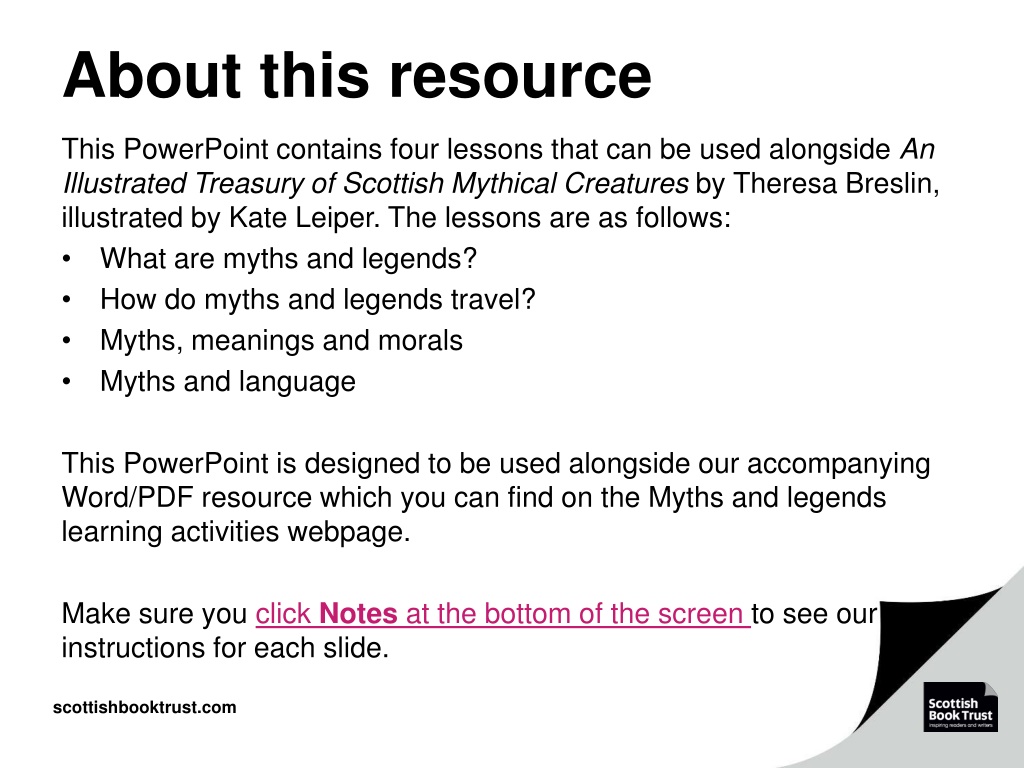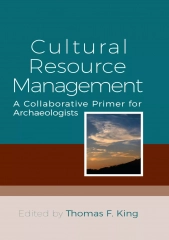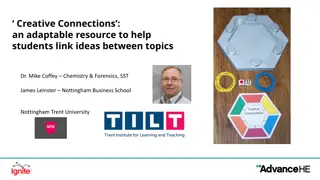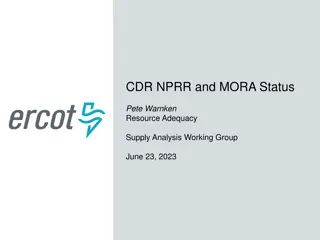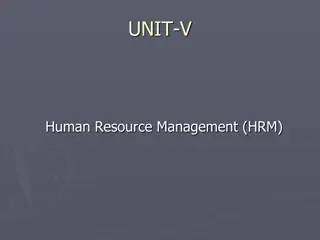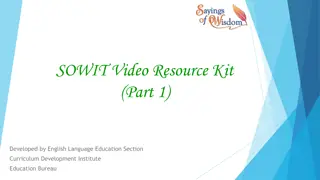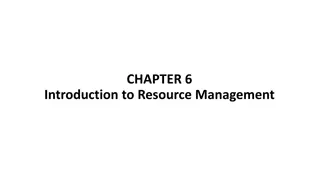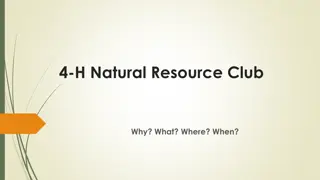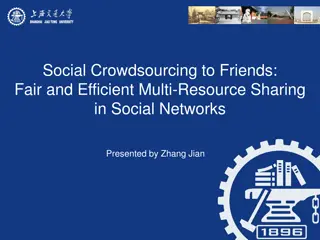About this resource
Dive into the world of Scottish myths and legends with this PowerPoint resource containing four engaging lessons to accompany "An Illustrated Treasury of Scottish Mythical Creatures" by Theresa Breslin. Learn about the differences between myths and legends, how they travel, their meanings and morals, and their impact on language. Discover the characteristics of myths and legends, explore how to differentiate between the two, and participate in activities to deepen understanding. Further ideas for exploration and learning are also provided. Enhance your knowledge of Scottish folklore with this educational resource.
Download Presentation

Please find below an Image/Link to download the presentation.
The content on the website is provided AS IS for your information and personal use only. It may not be sold, licensed, or shared on other websites without obtaining consent from the author. Download presentation by click this link. If you encounter any issues during the download, it is possible that the publisher has removed the file from their server.
E N D
Presentation Transcript
About this resource This PowerPoint contains four lessons that can be used alongside An Illustrated Treasury of Scottish Mythical Creatures by Theresa Breslin, illustrated by Kate Leiper. The lessons are as follows: What are myths and legends? How do myths and legends travel? Myths, meanings and morals Myths and language This PowerPoint is designed to be used alongside our accompanying Word/PDF resource which you can find on the Myths and legends learning activities webpage. Make sure you click Notes at the bottom of the screen to see our instructions for each slide. scottishbooktrust.com
Further ideas Use our Misinformation and fake news resource to look at reliable sources of information Use our Storytelling activities to explore drama, stories and reading aloud Explore Folklore Scotland s map to find local stories from your area scottishbooktrust.com
Scottish myths and legends Scottish Book Trust scottishbooktrust.com
Lesson 1: What are myths and legends? scottishbooktrust.com
What is a myth? A myth is a traditional story that usually involves supernatural beings or events. Myths are sometimes used to explain something people don t understand. For example, in Norse mythology, Thor is the God of thunder and lightning. So people used the story of Thor to explain storms. scottishbooktrust.com
What is a legend? A legend is another form of story that usually mentions real people or historical events. For example, King Arthur may have been based on a real person and is based in a specific time period. scottishbooktrust.com
How to tell if a story is myth or legend: Myth: Legend: Look for magical or supernatural animals, creatures or beings Look for stories about a real person or specific event Often not set in a specific time period Often set in a specific time period scottishbooktrust.com
Sort the following as either myths or legends scottishbooktrust.com
Unicorns A unicorn is a horse with a single horn on their head. scottishbooktrust.com
Unicorns are myth! A unicorn is a myth. scottishbooktrust.com
Robin Hood Robin Hood is the story of a man who steals from the rich to give to the poor. scottishbooktrust.com
Robin Hood is legend! Robin Hood is a legend, as the story is inspired by a real person and time period. scottishbooktrust.com
Zheng Yi Sao Zheng Yi Sao was a pirate leader from China who commanded over 60,000 pirates. She was one of the most successful pirates in history. scottishbooktrust.com
Zheng Yi Sao is legend! Zheng Yi Sao is a legend because, whilst her story is exaggerated she was a real person (and a real pirate!) scottishbooktrust.com
Selkies Selkies are seals who can turn into people by removing their sealskin. scottishbooktrust.com
Selkies are myth! Selkies are myth because they are not based on a true story. scottishbooktrust.com
Romulus and Remus Romulus and Remus were twin brothers who founded the city of Rome. The story claims they were raised by a female wolf. scottishbooktrust.com
Romulus and Remus are legend! Romulus and Remus are legend because they are based on a real person and city. scottishbooktrust.com
Lesson 2: How do myths and legends travel? scottishbooktrust.com
How myths and legends travel Some myths and legends are specific to some countries, whereas others can travel. Most myths and legends were stories that people would tell one another. So, when people from different cultures meet and share stories, a myth or legend can spread to another area whether that s a new town, area or country. scottishbooktrust.com
Dragons! Dragons are a great example of a common myth. Many cultures across the world have a story about a dragon, but each of them are a bit different. scottishbooktrust.com
Types of dragon Chinese: No wings Can t breathe fire No horns Incredibly intelligent European: Can fly Breathe fire Have horns Often don t talk scottishbooktrust.com
Selkies 1 A famous myth from Scotland is a selkie a seal who can turn into a person by removing their sealskin. The story often follows a selkie who has their skin stolen, and so can t return to the sea. scottishbooktrust.com
Selkies 2 The selkie story is from the Northern Islands of Scotland (Orkney and Shetland). But the selkie story has also been found in Iceland, the Faroe Islands and Ireland. By looking at a map we can see how this story has travelled. scottishbooktrust.com
Lesson 3: Myths, meanings and morals scottishbooktrust.com
The meanings behind stories Myths and legends often have a moral. This means that there is a lesson we can take away from them that can apply to other situations. One example of this is The Wee Folk of Merlin Craig. scottishbooktrust.com
Whats the moral of the Wee Folk? What do you think the moral of the story is? We can often figure out what a myth or legend is trying to tell us by looking at: how the characters behave what words are used to describe the characters who is celebrated versus who is punished scottishbooktrust.com
The Wee Folk of Merlin Craig 1 This story follows Dougal who cuts peat from the land his master owns. His boss will then sell the peat to people who will burn it to heat their homes. Dougal doesn t want to cut the peat where the Wee Folk live as this will destroy their homes. Dougal s master forces him to cut the peat by threatening that he will fire him if he doesn t. scottishbooktrust.com
The Wee Folk of Merlin Craig 2 When Dougal s master forces him to cut the peat, the Wee Folk s house is destroyed. The Wee Folk get revenge on the master by forcing him to dance all day for twenty days. When the master returns home, he realises because the Wee Folk are magical and he wasn t away for twenty days he was away for twenty years! scottishbooktrust.com
Dougal versus The Master The Master: Puts the money he ll make before the Wee Folk s homes Forces Dougal to harm the Wee Folk by threatening him Is punished by the Wee Folk for harming them Ends the story without a house Dougal: Doesn t want to harm the Wee Folk Tries to explain to his Master why he shouldn t cut the peat Wants to look after his family (and so tries to keep his job) Ends the story with a family and a big house scottishbooktrust.com
Adjectives: Dougal and the Master 1 What words would you use to describe Dougal versus the Master? scottishbooktrust.com
Dougal versus The Master 2 The Master: Selfish Cruel Exploitative (takes advantage of Dougal s work) Dougal: Hardworking Caring Loving Patient scottishbooktrust.com
The moral of the Wee Folk 1 The Wee Folk of Merlin Craig is scottishbooktrust.com
The moral of the Wee Folk 2 The Wee Folk of Merlin Craig is telling us we should look after other people and that we shouldn t be selfish and put ourselves before others. We could also understand this through The Golden Rule which says we should treat others how we would like to be treated. scottishbooktrust.com
Lesson 4: Myths and language scottishbooktrust.com
Wulvers and werewolves Who has heard of a wulver before? Have you heard of a werewolf? How are they similar? How are they different? scottishbooktrust.com
Compare wulvers and werewolves 1 Wulvers Both Werewolves scottishbooktrust.com
Compare wulvers and werewolves 2 Wulvers Both Werewolves Hunt humans and other animals Change during full moon, are humans the rest of the time Can turn other humans into werewolves by biting them Don t wear clothes or act like people when they re in werewolf form Are aggressive and angry Like fishing Are half man, half wolf Live in caves Mythical creatures Are wulvers all the time and don t transform Explore the wilderness Wear clothes and can talk Are kind and generous scottishbooktrust.com
Word: Werewolf We can learn more about a myth when we look at where the words we use come from. For example, the word werewolf comes from the Old English wolf man. So we know that long ago people were talking about a creature that was both man and wolf. Seems obvious, right? scottishbooktrust.com
Word: Wulver Where do you think the word wulver comes from? What do you think it means? The answer might surprise you! scottishbooktrust.com
Origin of wulver 1 The word wulver actually means fairy! Here s how it came to name a mythical creature. In 1890s, Jakob Jakobsen, a scholar from the Faroe Islands, was creating a list of the names of places in Shetland and came across Wolvershull. Shetland has a lot of Old Norse place names because of how close it is to Norway as well as how many Vikings lived in Shetland. scottishbooktrust.com
Origin of wulver 2 Jakob Jakobsen pointed out that Wolvershull came from the Old Norse and meant fairy hill. Wolver = Fairy Hull = hill In the 1930s, over 40 years after Jakob Jakobsen s study, a folklorist called Jessie Saxby was struck by how much the word wolver or wulver sounded like the word wolf . So she wrote a story about a half man, half wolf called a wulver. scottishbooktrust.com
Language So by looking at myths, we can learn more about language including what languages people spoke in the past and how those languages have changed over time. scottishbooktrust.com
Which words do you recognise? lemon ninja wheest wee namby-pamby lamp sushi caf cartoon gloaming dog ketchup penguin sock kitchen tumshie scottishbooktrust.com
Where do you think these words come from? lemon ninja wheest wee namby-pamby lamp sushi caf cartoon gloaming dog ketchup penguin sock kitchen tumshie scottishbooktrust.com
How many did you get right? lemon Arabic ninja Japanese wheest Scots wee Scots namby-pamby English lamp English sushi Japanese caf French cartoon Italian gloaming Scots dog English ketchup Chinese penguin Welsh sock English kitchen English tumshie Scots scottishbooktrust.com
How words travel Our language is always changing and new words are created and shared all the time. One way that languages are changed is when we tell stories. Stories often travel between different areas or countries, and mean we swap words. Wulver was a story originally from Shetland, but is now known across Scotland and beyond! scottishbooktrust.com
Time to be a storyteller! Imagine you re telling a story to someone. Pick one of the words from the list and write down how you d explain it to someone who didn t recognise it. lemon ninja wheest wee namby- pamby cartoon lamp sushi caf gloaming dog ketchup penguin sock kitchen tumshie scottishbooktrust.com
When stories dont always make it scottishbooktrust.com
What is a Questing Beast? scottishbooktrust.com
